Averys (Radnage) Ltd - Rocca HEAR
Produced with the kind permission of Rod Avery
Click here to see Avery's field maps in ![]()
Weather data: Premium Crops have sponsored a Sencrop weather monitor in the field and we shall be regularly updating this website with the output from that machine...
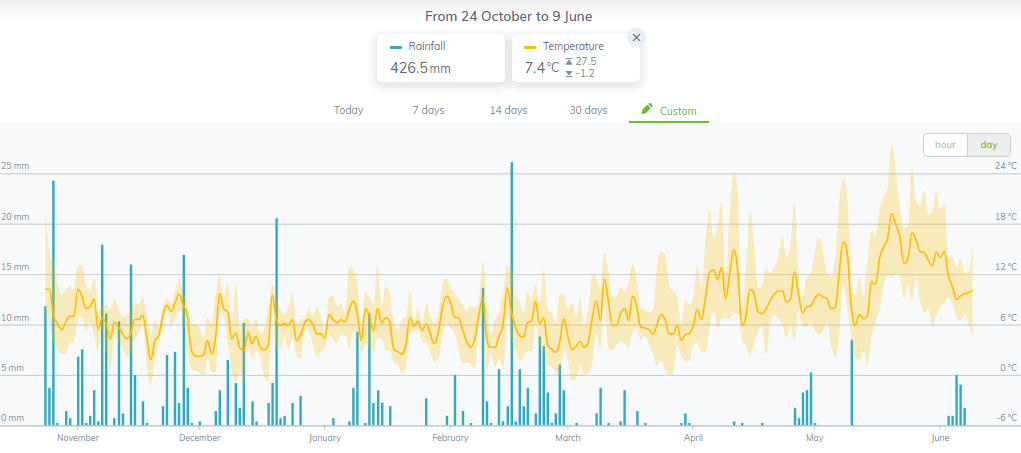
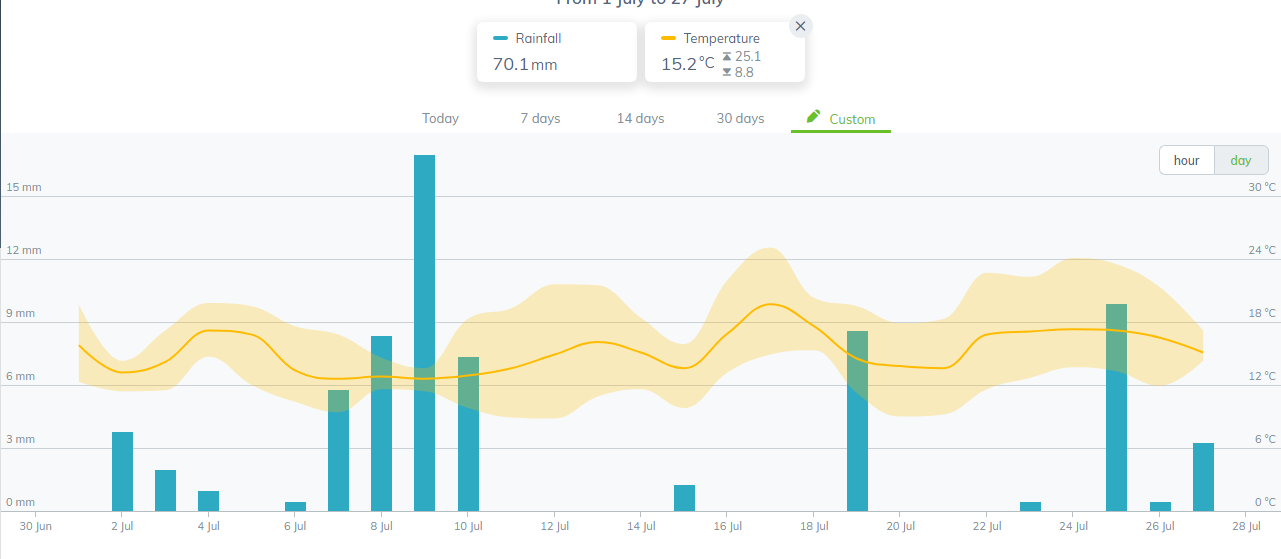
June - July
Harvest is complete, and the grain in the barn after a difficult season. Yields will not be known until collection. Estimated yields are 1t/acre so far.
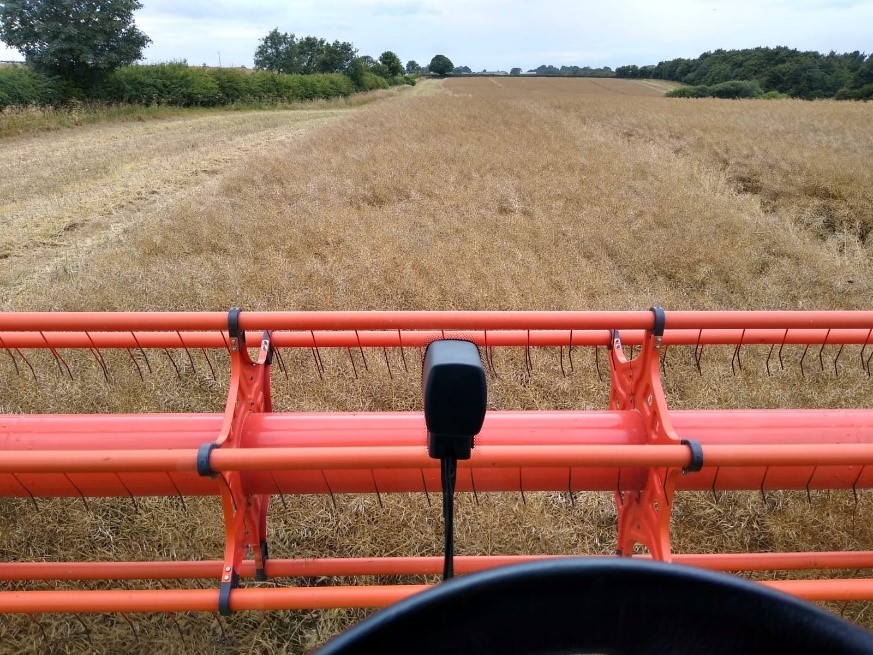
Rain is adding challenge to harvest, on top of a challenging year. In July 70mm of rain was recorded. Average temperatures are relatively cool for this time of year at 15.2°C (see weather data above).
April - May
The HEAR is now in full flower and looks a monster crop. The crop started flowering late April and is still going, which bodes well for yields. To keep Sclerotinia out of the crop Decoy (protioconazole) at 0.5l/ha has been applied.
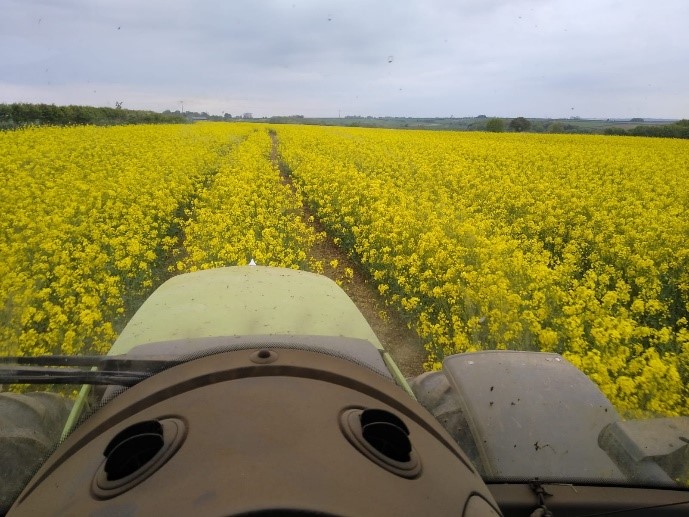
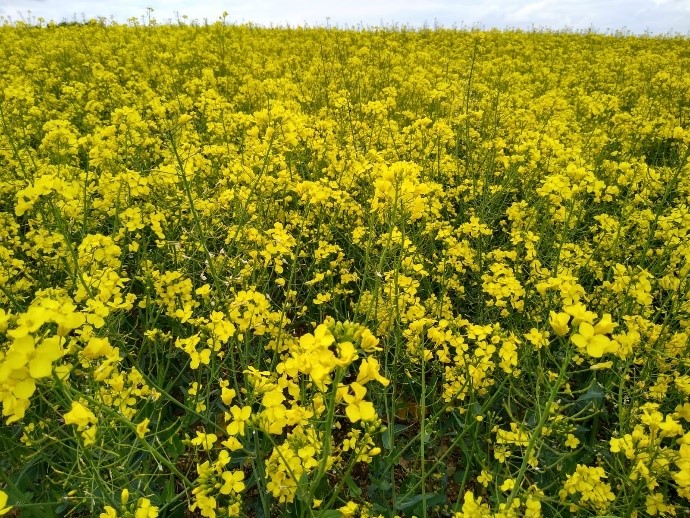
February - March
The HEAR is starting to stretch its legs as the soils finally start to dry out. The HEAR is due to have fertilizer applications, the waterlogged soils will be low on nutrient reserves after the deluge. 370kg/ha of double top fertilizer has been applied 21st March, as well as Epostop and Proleaf to add micronutrients to the crop.
The mild wet weather has increased the risk of disease in the crops this year. Lime Kiln has had and Snippendale is due Corinth (prothioconazole and tebuconazole) and Winceby Walk has had Decoy 250EC (prothioconazole) on 21st March. This will help to control any remaining Phoma and target Light Leaf Spot coming into the crop. Due to large groundsel weeds present this year, Snipedale has had the herbicide Korvetto applied on the same day. The pigeons are still persisting in the fields, especially on the patches that are behind. Bird scarers have been deployed to try and reduce damage.
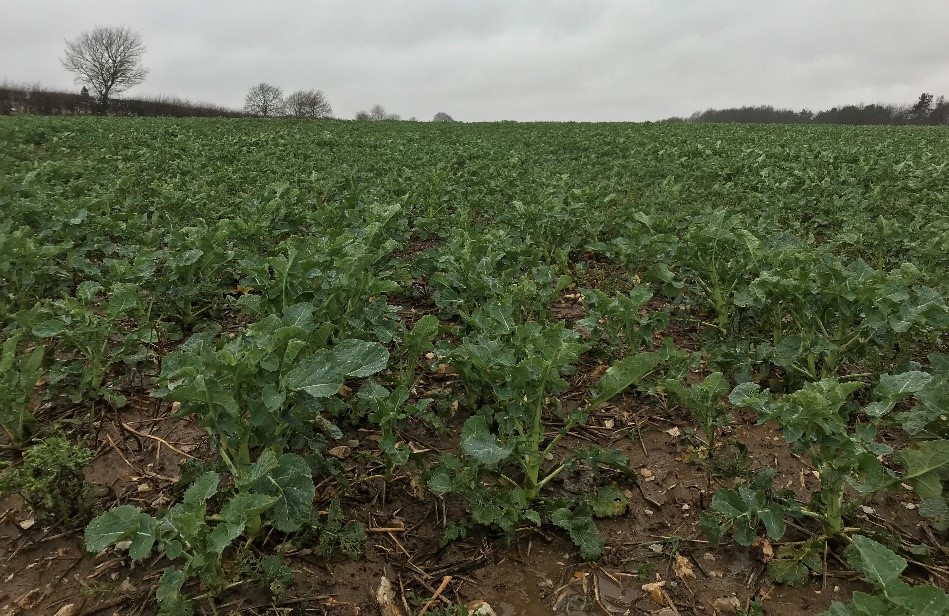
In addition, spring Naked Oats are being drilled on farm. Ryehill field was drilled on 25th March as fields are slowly drying out.
In February, there was still a fair amount of rain, it seems now to be lessening thankfully into March, a total of 113.5mm rain has been recorded. Average temperatures are still mild and slowly creeping up, averaging 5.9°C (see weather data above).
December - January
Crop growth has remained slow over Winter, but crops are looking well and there are enough plant populations present in the fields. Astro Kerb was applied to Winceby walk field and Solitaire (propyzamide) was applied to Snipedale and Limekilin fields on 24th January. It is hoped there will be enough of a dry weather window for herbicides to remain on the soil and be taken up by the weeds, before the next deluge.
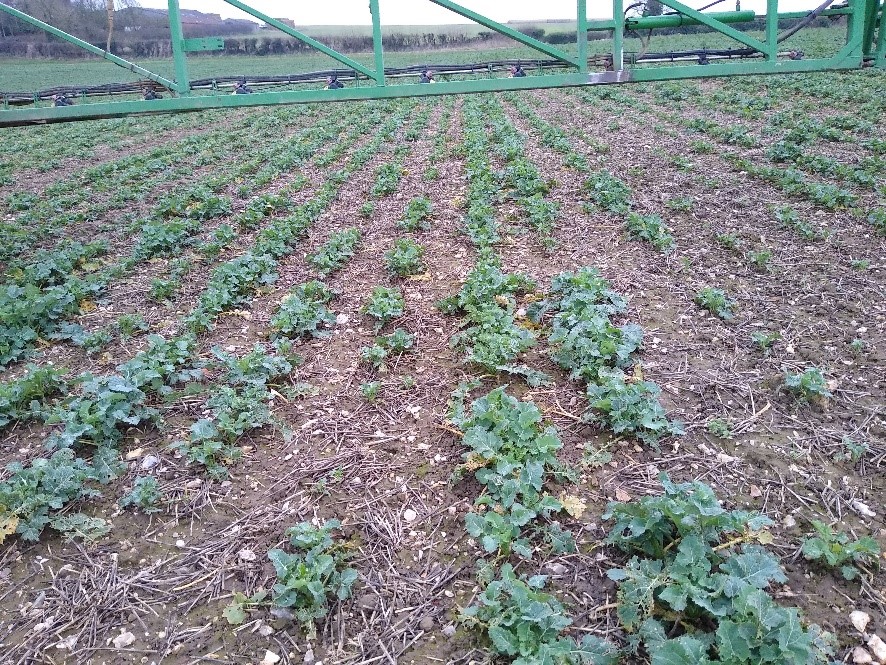
Pigeons have been grazing the OSR, initially on Snipedale fields and then the Limekiln field (See below). Gas bangers and scarers have been deployed in the hope of keeping the pigeons at bay. With the high amount of rain, there will not be much remaining soil nitrogen available. A low dose of urea (50-70kg N) is being considered, to help plants on waterlogged soils and ensure the nitrogen reserves are there in time for Spring plant growth. It'll no doubt rain and drop well below freezing once the urea is applied!
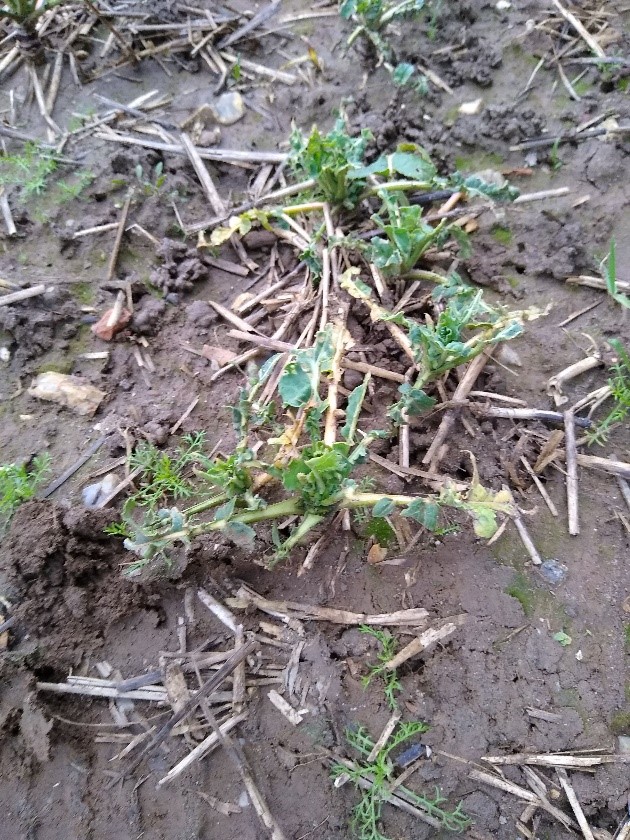
In January total rainfall has eased compared to the previous months, but there has still been 38.9mm of rain in total for the month. Average temperatures are still mild averaging 5.9°C (see weather data above).
November
The last inspection of the crop at the end of November showed an increased prevalence of Phoma (Figure 2) and the weed groundsel. The Phoma level was no surprise given the significant amount of rain that has fallen over the autumn.
Despite the wet conditions, an application of Belkar at 0.25l/ha and Decoy 250EC (Prothioconazole) at 0.35l/ha was applied on the 28th October 2019. The farms agronomist had prescribed Biscaya (Thiacloprid) for another pass on flea beetle, but Mr Avery decided to leave it out due to doing more damage to helpful insect species than having an effect on flea beetle.
Kerb (Propyzamide) is the next planned application, when cooler and fingers crossed, drier weather will allow the sprayer to travel over the next couple of days. Overall crop growth looks to have all but stopped, mainly due to the water I suspect more than temperature (See image below).
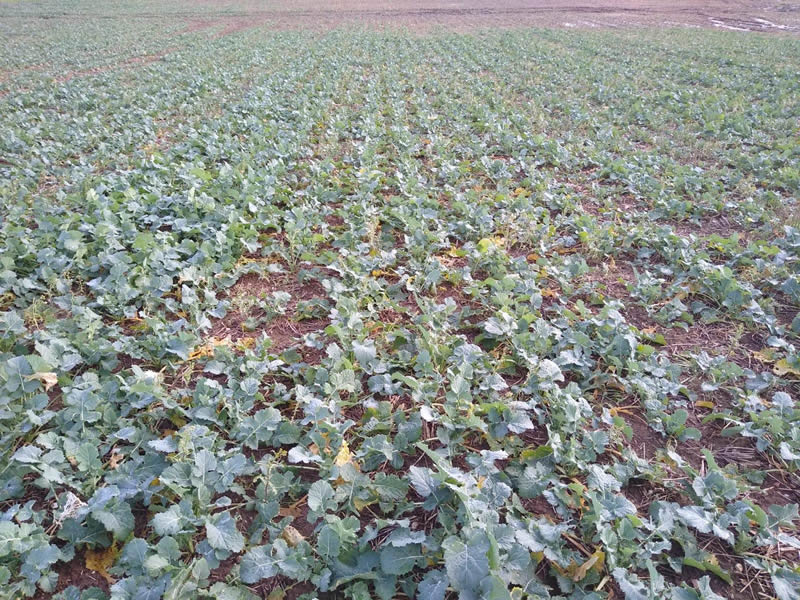
There are some signs of Phoma lesions on older leaves. The download from the Sencrop weather station (see top of page) show just how persistent rain has been since the end of September. Average temperatures are 6.3 °C and are starting to drop, which should help slow disease development and any slug activity.
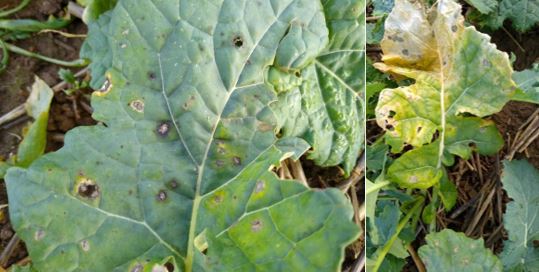
October
Rain has provided much needed moisture for crops to grow away from CSFB. Crops are looking good and volunteer cereals are starting to die. CSFB can still be found, but the crop is beyond the most susceptible stage to damage, however in the latest drilled field rows still aren’t visible. The excessive levels of moisture in the fields has slowed the vigour of the crop.
Sprays are now up to date, one field has had Belkar for broad leaved weeds, whilst the rest have had just Fusilade Max for volunteers. The last pyretheroid was applied in early October to keep the CSFB at bay and minimise possible future larvae populations.
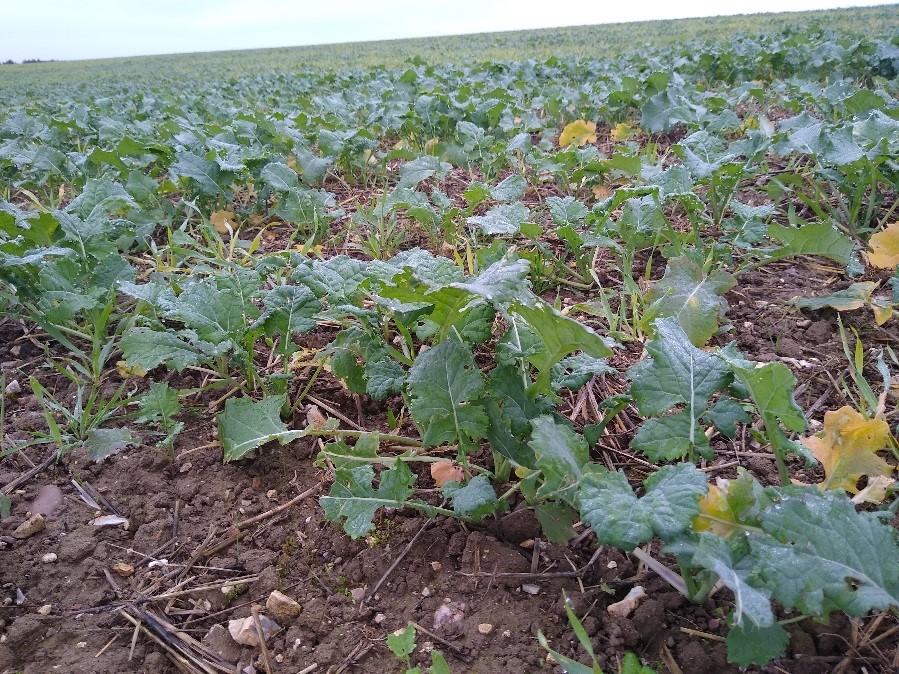
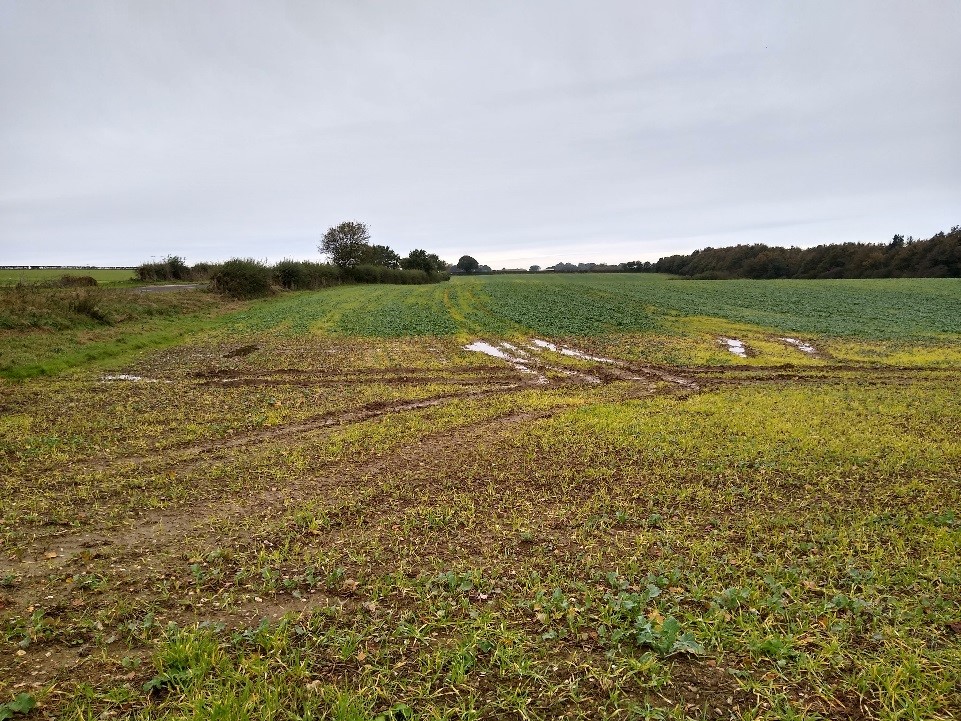
September
Sowing Date(s): First 2/3 = 21st/22nd August and Final 1/3 = 4th September
Sowing Conditions: One third of the crop was drilled on the 4th September and the other two thirds 21-22nd August into a soil that is sandy silt loam using subsoiler followed by Suffolk coultered combination drill with seed passing down every third coulter. The soil type was analysed, and pH found to be high, which means future nutrient applications will be adjusted to apply nutrients that are locked as a result. DAP has been applied to all fields of the crop to aid establishment, and three out of four fields have had an insecticide and graminicide.
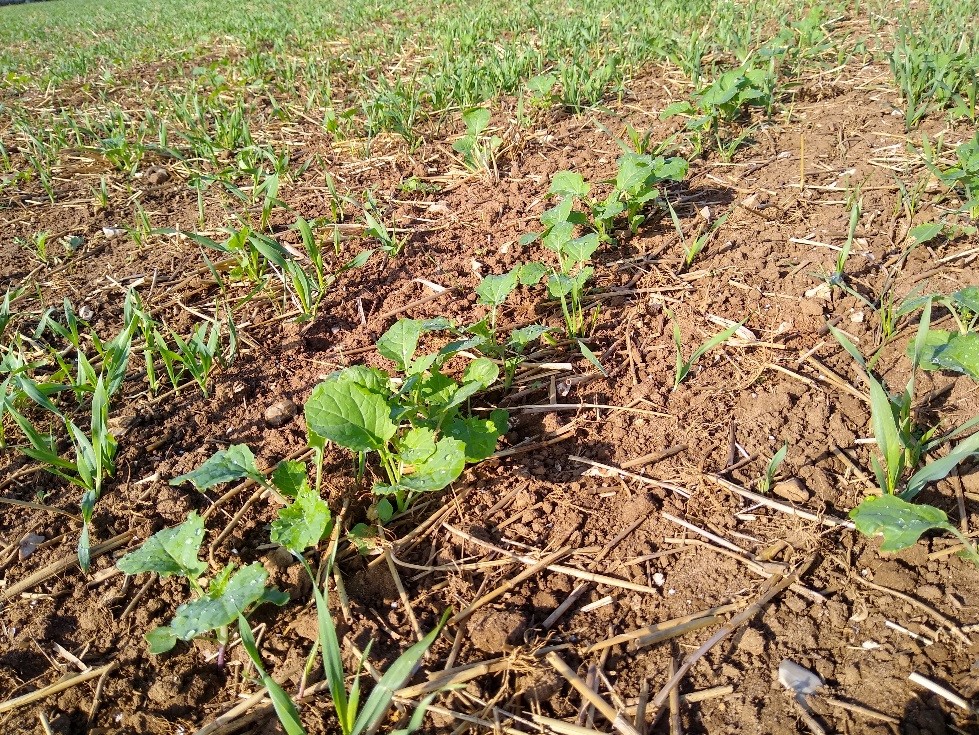
Rocca has high autumn vigour which helps the crop get up and away from cabbage stem flea beetle (CSFB) damage and aids establishment in dry conditions. The volunteer cereals have been sprayed off, which will reduce further water loss to the crop from the volunteer cereals.

